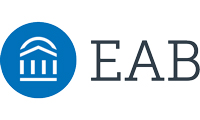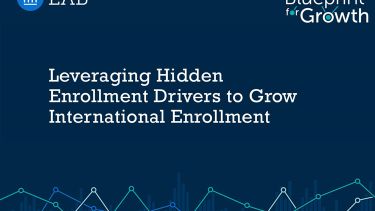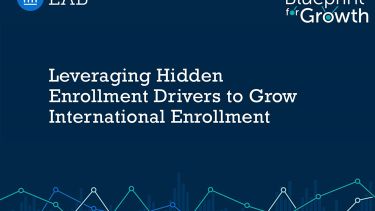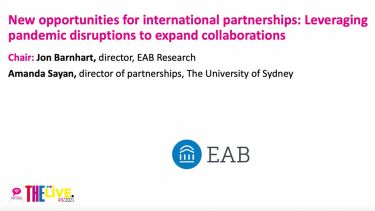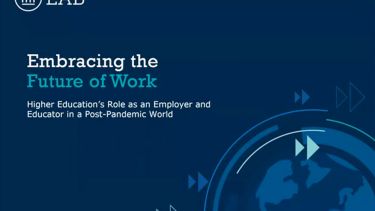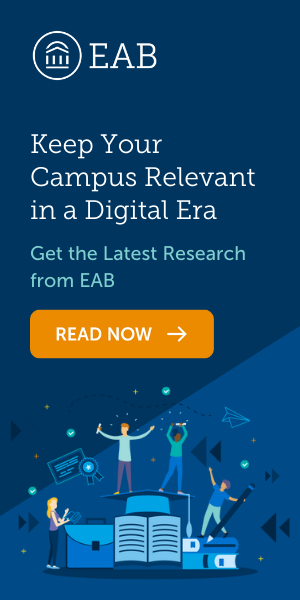EAB is helping universities better understand and meet student needs at every stage of their journey
When designing a modern student experience, universities must take a holistic approach that balances student needs and expectations. A session at THE Campus Live UK&IE, held in partnership with EAB, considered the six “what ifs” that institutions should consider in order to bridge the gap between expectation and reality.
Gary Guadagnolo, EAB’s director of research, opened the discussion with a case study from Disney. When faced with a falling perception of value and rising costs, the brand redesigned its customer experience by using data to better understand customer needs and behaviours.
Universities are at a similar point, Guadagnolo said, with EAB’s own research identifying “student consumer preferences” as the top risk facing higher education institutions. Gen Z students have high expectations of value for money and require optimised, mobile-first digital education in the pandemic age.
To transform their operations and meet modern expectations, universities should consider six goals: understand students as individuals; complete administrative tasks easily from anywhere; make students feel welcome and connected from the start; provide access to the right learning experiences at the right time; empower students; and equip graduates for the job market. Universities may need to significantly update both technology and strategy to transform accordingly, Guadagnolo said.
Alison Phillips, director of digital and technical services at Staffordshire University, responded to these six points by introducing Staffordshire’s digital vision and 2030 strategy, which has transformed the student experience at her institution. Central to the vision were “four pillars”: data-driven connections; automation and AI to free up staff time; hyper-personalisation; and digital skills to future-proof opportunities.
The central tool Staffordshire used when implementing this strategy is Beacon, the university’s student support and coaching app. Beacon evolved from a chatbot to become a digital coach, strategic channel and 24/7 student support platform that uses data insights and feedback to engage personally with students. “It is learning all the time in order to optimise the student experience,” Phillips said.
Beacon proved extremely popular, and the automation of repetitive administration tasks freed up staff to allow them to focus more effectively on student needs. The platform gives users “one place to go”, Phillips said. “We are channelling support to students in the way they want to receive it.”
Looking forward, Phillips outlined Staffordshire’s GAME programme. Currently in its early stages, the programme will assess the effectiveness of digital interventions in improving student engagement and success. It will look at attainment, progression and retention, and will use data to establish indicators such as engagement, satisfaction and well-being. The programme can then establish, on a personalised basis, where nudges and interventions may be required.
GAME, Phillips said, will oversee the “entire student journey” with interventions tailored to specific stages – for example, welcome week. “If students come to welcome week, they are more likely to stay with us,” Phillips explained.
This new approach allowed Staffordshire to gain a deeper understanding of how to achieve high satisfaction throughout the student journey.
The panel:
- Gary Guadagnolo, director of research, EAB
- Alison Phillips, director of digital and technical services, Staffordshire University
Watch the session on demand above or on the THE Connect YouTube channel.
Find out more about EAB.
